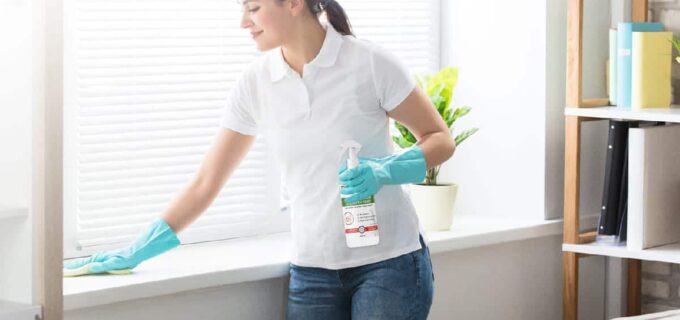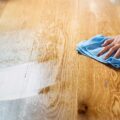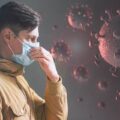Hydrogen peroxide is a well-known chemical that has been used for several industrial and domestic applications for centuries. Hydrogen peroxide is commonly used as an oxidizer, bleaching agent, antiseptic, reliable resource in households and during disinfection procedures. It is known for its low toxicity as it tends to decompose in the presence of heat into water molecules and eventually to evaporates. However, certain precautions should be taken into account to ensure the healthy use of Hydrogen Peroxide. Here are some quick tips on carrying out healthy and safe decontamination and disinfection using hydrogen peroxide.

Cleaning your kitchen with Hydrogen Peroxide
Hydrogen peroxide is commonly used as a disinfection agent in kitchens as it is easy to apply and represents a little risk to human health when used adequately. Low concentrations of hydrogen peroxide (5% or lower concentrations) are recommended as disinfectant agents in the kitchen and surfaces. As the hydrogen peroxide is highly volatile, it will not persist on the surface throughout time, requiring adequate ventilation of the area to avoid air contamination.
Generally, hydrogen peroxide should be applied to surfaces that present mold, moisture, and fungus formation. These are commonly found in countertops, sinks, and dishwashers, representing the focus of black yeast, E. coli, and other bacteria that can cause long-term health issues. In this case, professional disinfectant spray with hydrogen peroxide combining the ideal concentration of hydrogen peroxide with other chemicals can help prevent bacteria and viruses from proliferating in your dishwasher. Hydrogen peroxide releases hydroxyl radicals that act on the membrane lipids, DNA, and other cell components, which leads to the death of bacteria, viruses, germs, and other microorganisms.
Humid areas are known for providing the ideal conditions for this to occur and can lead to the proliferation of dangerous types of mold. In these cases, hiring Professional Disinfection Services in Singapore might be the best-recommended course of action, relying on trained professionals with proper equipment to ensure the safety of your household.

Cleaning wounds with Hydrogen Peroxide
Hydrogen peroxide is recognized as a mild antiseptic and has been used to clean wounds for decades. Applied as a solution, with concentrations of only up to 3%, hydrogen peroxide can help clean open wounds by a simple chemical reaction that releases oxygen to the area where it was applied. Some bacteria and viruses can’t resist this increase in the local concentration of oxygen and foam being removed from the skin and the dead skin of the surface.
Some individuals are allergic to hydrogen peroxide, and a simple test is recommended before prolonged use. A small amount should be applied to the skin and observed in case of irritation of the area. If allergic to hydrogen peroxide, individuals might present redness, stinging, and irritation of the skin. Hydrogen peroxide should not be swallowed as the side effects of ingestion could lead to hospitalization due to upset stomach or, in more severe cases, can lead to heart attacks and strokes. Finally, hydrogen peroxide can also kill healthy cells in the wound, and several doctors have stopped recommended excessive use of this chemical as a wound treatment.

Cleaning grout with Hydrogen Peroxide
Grout is a typically porous material found in between tiles of kitchens and bathrooms. With time, these surfaces tend to grow mold and mildew or accumulate spills that accidentally occur in kitchens, giving it a stained and dirty aspect. Hydrogen peroxide can be used to clean the grout as its oxidizing property tends to whiten the surface and restore its pristine new element, improving the bathroom and kitchen looks.
Home Disinfection Services in Singapore tend to apply hydrogen peroxide industrial solutions to achieve a final look that becomes a cleanness standard. Using the chemical on the grout, the white color is restored, and the area is disinfected as it removes any form of bacteria, mold, and viruses that might be growing within the tiles.

Cleaning your clothes with Hydrogen Peroxide
Considering the whitening capacity of Hydrogen Peroxide, it is also used as a whitening agent for clothes and fabrics. Presenting similar features as expensive washing chemicals found in groceries, Hydrogen Peroxide is a low-cost and straightforward product to add to your cleaning solution, which helps restore the clothes’ shiny white. However, initial tests with the fabric should be carried out to ensure that the chemical does not damage the material during a washer’s full washing cycle. Another positive feature of using hydrogen peroxide instead of bleach, for example, is that its chemical composition is less harmful to the environment as it quickly degrades naturally into water molecules.
As a precaution, when using hydrogen peroxide to clean your clothes, you should always avoid inserting colorful pieces in the same wash. Its strong oxidating properties might remove the dyes from these materials and transfer it to the rest of the white content in the washer.

Cleaning surfaces with Hydrogen Peroxide
Hydrogen peroxide is a right solution for surface cleaning as its chemistry is not damaging to most products and other materials such as wood, plastic, glass, and metals. Improving the shiny aspect of most of these materials, hydrogen peroxide can be easily applied on the surface with wipes and towels, removing any form of fungus and molds that can be accumulating in corners and uneven surfaces. Further, hydrogen peroxide also helps remove bacteria from the surface, improving the health of the environment.
Hydrogen peroxide is also very useful when removing mold, which, when found in higher concentrations, can cause a strong odor in the environment leading to the smell of dampening in the rooms. With a simple application of hydrogen peroxide on the surface, followed by swiping the area with towels, removing any superficial presence of molds and other microorganisms is possible.
How can Big Red help?
Big Red is a Professional Cleaning and Disinfection Company in Singapore focused on providing their clients with non-toxic, environmentally friendly, effective solutions to remove bacteria, viruses, germs, fungus, and other microorganisms from their households and office spaces. Relying on a team of highly qualified professionals, Big Red has been a strong ally in sanitizing and disinfecting all indoor areas improving the air quality and overall health of their occupants.
Most recently, Big Red has developed a strong surface cleaner product that uses Hydrogen Peroxide in its composition predominantly, taking advantage of all the benefits of its chemical properties, meanwhile protecting your family and colleagues. Our BRSanitise Multi-Purpose Disinfectant has been developed and tested to provide an easy, non-toxic solution for everyone.
Nevertheless, Big Red is also available for a wide range of professional cleaning and disinfection services that might be necessary when large colonies of mold and fungus are already installed. These can be easily detected by the presence of stains and strong odors on walls and carpets. In this case, professional disinfection and cleaning services are recommended for mold and fungus removal as these organisms release strong chemicals that can damage human health.
Related Posts
- BRSanitise™ Multi-Purpose Disinfectant
- Coronavirus – Protecting Your Indoor Surface
- How to Clean and Disinfect Your Home: Limiting Coronavirus Exposure (Part One)
Frequently Asked Questions
- What is the difference between sanitisation and disinfection?

- What is the use for hydrogen peroxide?

- Is hydrogen peroxide safe?





